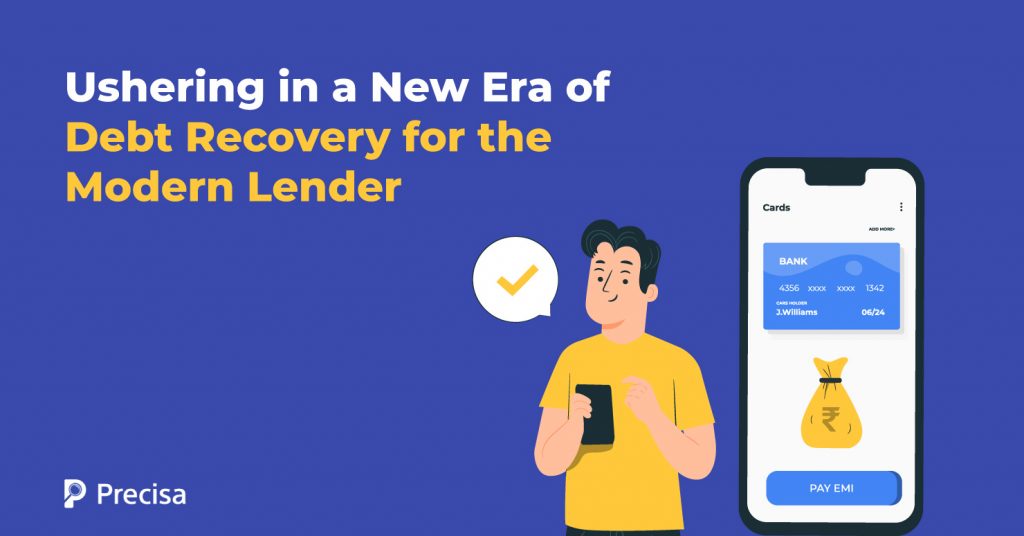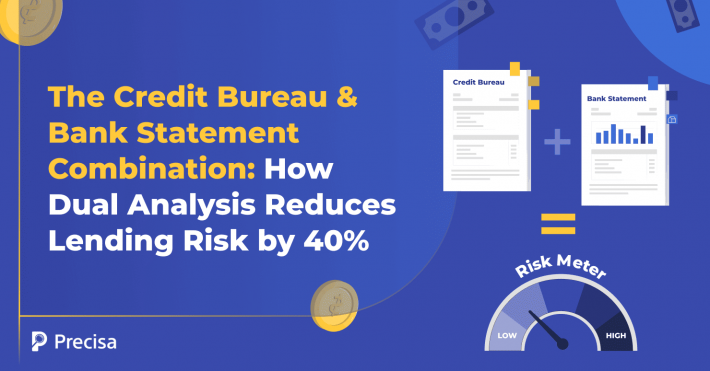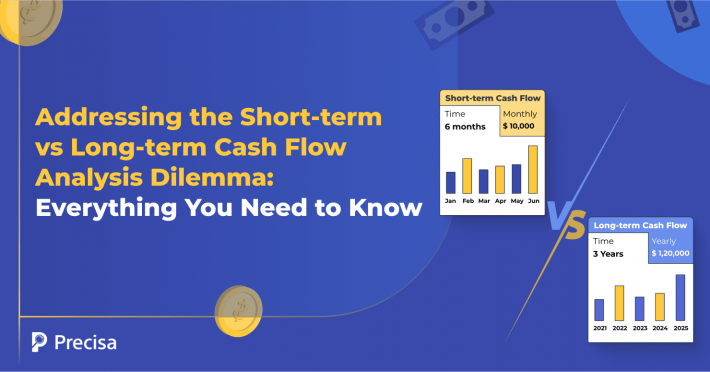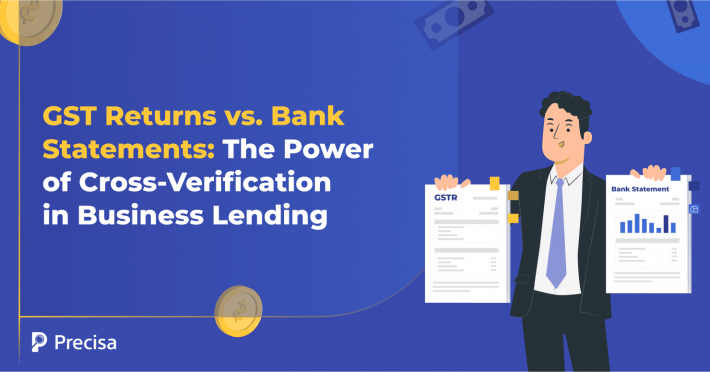Ushering in a New Era of Debt Recovery for the Modern Lender

According to a report, the number of cases referred to the debt recovery tribunal (DRT), grew significantly to INR 4.02 trillion in FY23. Yet, the amount recovered via this route downslided to 9.2% in FY23 as compared to 17.5% in FY2022.
This translates to the debt recovery rate for non-performing assets (NPAs) falling from 17.6% in FY2022 to 15% in FY2023. One thing is clear, as the lending industry grows in India, debt recovery continues to be a key challenge.
Therefore, lenders should consider rehauling their strategies to recover debt. For instance, a combination of tech-enabled solutions and best practices can help them prioritise debt recovery.
In this blog post, we outline some impactful strategies that can help lenders design a high-impact debt recovery function.
What is Debt Recovery Management in Lending?
Before we get into the strategies, let us go over debt recovery management, which refers to a systematic process lenders adopt to recover unpaid debt.
It is generally expected that some borrowers may delay, or miss out on their Equated Monthly Installment (EMI) payments. Typically, lenders tend to be reactive to such delays.
In such cases, banks would traditionally outsource this function to debt recovery agents (DRAs). However, this approach has resulted in the following challenges:
- Lenders may face investigation by the Reserve Bank of India (RBI), which issued guidelines in 2022 to lenders as a response to growing reports of customer harassment by recovery agents.
For instance, in 2023, RBI slapped a penalty of INR 42.48 lakhs against a fintech startup due to harassment during the debt recovery process. The RBI has made it simple for customers to file a complaint in such cases. - Lenders may be faced with lawsuits by borrowers who experience harassment by recovery agencies.
- Despite the best efforts, the debt recovery rate continues to be relatively low.
As a result, forward-thinking lenders are relying on debt recovery operations to make it more customer-centric, data-driven, and outcome-oriented.
Top 5 Debt Recovery Management Strategies
Lenders can recover debt efficiently by implementing the following debt recovery management strategies:
1. Closely Monitor Debt Recovery
When lenders approve a loan and disburse loan funds they must immediately start monitoring EMI payments. Such continuous monitoring of EMI payments, from the start of the loan tenure until the entire loan is repaid, enables them to be vigilant.
As a result, they can identify potential cases of delinquencies and NPAs, early on and take appropriate action.
Monitoring loans takes precedence especially as lenders follow through on ambitious priority sector and district lending opportunities. Knowing where they stand on delinquencies also enables them to take precautionary measures to protect their business.
For instance, they can make early investments in increasing their capital reserves to compensate for repayment deficits.
2. Borrower Data Must Be Up-To-Date
Borrower data is prone to changes. These include a change of address, contact information, employment details, and bank account information.
Borrowers’ circumstances may also change due to which they may be unable to repay their EMIs on time. So, lenders must ensure that borrower data is regularly updated.
Up-to-date borrower data helps agents come up with solutions that nudge borrowers to get back on track with payments. On the other hand, outdated information makes it challenging for lenders to engage with borrowers meaningfully. It slows down the debt recovery process, which translates to negative cash flows and lower revenues.
3. Swift Case Allocation to Debt Recovery Agents
Lenders often respond too late to defaulting borrowers. On the other hand, borrowers receive calls from multiple agents with repetitive messaging. Therefore, the entire engagement process can be antagonising for all stakeholders.
Instead, lenders must assign cases to agents as soon as borrowers miss payments. Cases must be assigned strategically to agents as per their relevant expertise. Factors such as ticket size of the loan, type of loan, and borrower location and profile, are some factors to consider during allocation.
They must also set clear policies on how agents must engage with borrowers, and escalate the matter to superiors. Agents should have the tools to update borrower data quickly and efficiently. They must be able to get quick approvals for changes in repayment plans.
4. Customised Repayment Solutions for Debt Recovery
When a borrower’s circumstances change, they may be unable to sustain EMI payments as per the loan’s existing terms and conditions.
For instance, they may have lost a job or their business may be going through a challenging phase. In such cases, lenders can leverage technology to customise their loans to facilitate a new loan structure.
This process can be fully automated with the use of bank statement analysis software. Staying flexible to such solutions not only helps businesses recover debt faster. This approach also helps businesses retain their customers who may be going through a temporary financial crisis.
5. Strengthen Risk Assessment Capabilities
Lenders often think of debt recovery as the process that comes after the funds have been disbursed to borrowers.
However, one of the top reasons for debt delinquencies is the inability of lenders to access risk accurately. They often make decisions based on intuition and with limited access to data such as income or revenue statements.
Although the optimal way to assess creditworthiness is to automate the entire process.
The adoption of automated bank statement analysis software is helping lenders analyse all financial data available, efficiently, with speed, and at scale. The data can include bank statements, credit history, income tax information, and goods and service tax returns.
Major Benefits of Efficient Debt Recovery Management
Here is how lenders can benefit by inculcating best practices for debt recovery:
1. Build Loyalty & Reduce Costs
Lenders can make debt recovery a customer-centric process. Over time, they can retain more borrowers as customers and reduce customer acquisition costs.
As lenders bring more efficiency and data-centricity to debt recovery operations, this approach translates to higher cost savings.
2. Improved Debt Recovery Rate
By introducing automated bank statement analysis, lenders can take precautionary measures to reduce debt delinquencies. They can expedite the debt recovery process and experience a higher recovery rate.
3. Trend Prediction Capabilities
When the data remains up today, lenders can forecast trends and predict future borrower behaviour.
4. Boost Profitability
Faster debt recovery results in improved cash flows and profitability for lenders.
5. Nurture a Positive Credit Culture
An efficient, transparent process helps nurture a culture of positive credit habits in customers. In turn, this value helps prevent debt potential industry crises.
The Takeaway
Undoubtedly, technology and best practices are transforming debt recovery for lenders. Automating the process improves efficiency, reduces NPAs, and speeds up recovery.
More importantly, they can retain customers and increase customer lifetime value, reduce customer acquisition costs, and drive their revenue goals.
Presica’s comprehensive and seamless financial data analysis solution simplifies and speeds up the process through automation. The software provides actionable insights on a customisable dashboard, thus helping companies make informed business decisions.
Request a free demo today!



